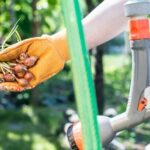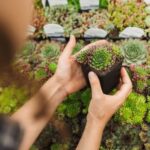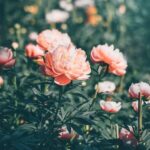Are you looking to create a beautiful and eco-friendly outdoor space? If so, you may want to consider exploring wildlife garden layout designs. By incorporating elements that attract and support local wildlife, you can create a haven for birds, butterflies, bees, and more right in your own backyard. From choosing the right plants to maintaining your garden throughout the seasons, there are endless possibilities when it comes to designing a wildlife-friendly garden.
When it comes to creating a wildlife garden, the layout is key. The way you design your outdoor space can make a big difference in how successful it is at attracting and supporting local wildlife. In this article, we will explore the many aspects of creating a wildlife garden layout and design that not only enhances the beauty of your yard but also provides important benefits for the environment.
Whether you have a large backyard or just a small balcony, there are wildlife garden layout designs that can be tailored to fit any space. With careful planning and consideration of the needs of local wildlife, you can create a thriving ecosystem right outside your door. So, let’s dive into the world of wildlife garden layout designs and discover how you can embrace the beauty and benefits of a wildlife garden.
Benefits of Creating a Wildlife Garden
The benefits of creating a wildlife garden are numerous and impactful. Not only does it provide a haven for local fauna, but it also contributes to the health of the overall ecosystem. By attracting beneficial insects, birds, and other wildlife, a wildlife garden helps to naturally control pests and promote pollination. This can result in healthier plants, flowers, and crops throughout the area.
Moreover, wildlife gardens can serve as educational tools, teaching people about the importance of preserving natural habitats and biodiversity. For children especially, observing the various creatures that inhabit a wildlife garden can be both fascinating and enlightening.
Furthermore, creating a wildlife garden can also contribute to personal well-being. Spending time in nature has been scientifically proven to reduce stress and anxiety levels. Watching colorful butterflies fluttering amidst vibrant flowers or listening to the soothing songs of birds can bring peace and tranquility to anyone who takes the time to enjoy such a space.
| Benefit | Description |
|---|---|
| Natural pest control | Attracting beneficial insects and birds can help control pests without using harmful chemicals. |
| Educational tool | Wildlife gardens teach people about preserving natural habitats and biodiversity. |
| Personal well-being | Spending time in nature has been proven to reduce stress and anxiety levels. |
Choosing the Right Plants and Flowers for a Wildlife Garden
When it comes to creating a wildlife garden, choosing the right plants and flowers is essential in attracting and supporting a range of beneficial wildlife. Here are some tips for selecting the perfect flora for your wildlife garden:
- Native Plants: Opt for native plants as they are well-adapted to the local climate, soil, and wildlife species. They provide food and shelter for a variety of insects, birds, and other wildlife.
- Wildflowers: Incorporate wildflowers into your garden, as they are not only beautiful but also provide nectar for butterflies, bees, and other pollinators. Examples include coneflowers, black-eyed susans, and bee balm.
- Berry-Bearing Shrubs: Consider planting shrubs such as holly or elderberry that produce berries, which are an excellent food source for birds during the colder months.
In addition to selecting the right plants and flowers, it’s important to create a diverse range of habitats within your garden to attract a variety of wildlife species. This can include providing different levels of vegetation, such as ground cover plants, shrubs, and trees to accommodate various animals’ needs. By carefully choosing the plants and flowers for your wildlife garden, you can create an inviting habitat that supports a wide range of beneficial wildlife.
Incorporating Water Features Into Your Wildlife Garden
Creating a water feature in your wildlife garden can not only add visual interest, but also provide an essential resource for wildlife. From small ponds to bubbling fountains, incorporating water features into your garden can attract a variety of creatures and enhance the overall ecosystem.
Types of Water Features
When considering adding a water feature to your wildlife garden, there are various options to choose from. A pond or small wetland area can provide a habitat for amphibians, dragonflies, and other water-loving creatures. A birdbath or shallow dish can offer drinking and bathing opportunities for birds. Even a simple dripping or trickling water source can attract butterflies, bees, and other insects.
Choosing the Right Location
The location of your water feature is crucial for its success in attracting wildlife. It’s best to place it in a spot that receives both sun and shade throughout the day. This ensures that it will be attractive to a wide variety of creatures. Additionally, consider placing it near vegetation or perching spots for birds so they feel safe while using it.
Maintenance of Water Features
Proper maintenance is important when it comes to incorporating water features into your wildlife garden. Regularly clean out any debris that may collect in the water feature to prevent mosquito breeding and keep the water fresh. Consider adding aquatic plants to help filter the water and provide hiding spots for small animals. Regularly topping up the water feature will ensure that it remains inviting for wildlife year-round.
Attracting Birds to Your Wildlife Garden
One of the most enjoyable aspects of creating a wildlife garden is the opportunity to attract a variety of bird species. By incorporating bird-friendly elements into your garden, you can create a welcoming environment for our feathered friends. To attract birds to your garden, it’s essential to provide food, water, and shelter.
When it comes to food, planting native trees and shrubs that produce berries or seeds can provide a natural food source for birds. Additionally, setting up bird feeders with a variety of seed mixes can help supplement their diet, especially during the winter months when food might be scarce.
Providing water in the form of a birdbath or small pond is also crucial for attracting birds to your garden. Not only do they need it for drinking, but they also use it for bathing and maintaining their plumage.
Shelter is another important factor in attracting birds to your garden. Trees and shrubs provide nesting sites and cover from predators. Adding birdhouses or nest boxes can also encourage birds to make themselves at home in your wildlife garden.
| Aspect | Benefits |
|---|---|
| Food | Provides natural food source; Attracts birds year-round |
| Water | Essential for drinking and bathing; Helps maintain healthy plumage |
| Shelter | Offers nesting sites; Provides cover from predators |
Creating a Habitat for Butterflies and Bees
Butterflies and bees are important pollinators in the ecosystem, and creating a habitat for them in your wildlife garden can help support their declining populations. Here are some tips for attracting butterflies and bees to your garden:
- Choose nectar-rich plants: Select flowers that are rich in nectar to attract butterflies and bees. Examples of these plants include lavender, coneflower, bee balm, and butterfly bush.
- Include host plants: Butterflies lay their eggs on specific host plants, so incorporating these into your garden can attract more butterflies. For example, milkweed is a host plant for monarch butterflies.
- Provide shelter: Butterflies and bees need shelter from wind and predators. Create areas with shrubs or low vegetation where they can rest and seek protection.
In addition to providing food and shelter for butterflies and bees, it’s important to avoid pesticides in your wildlife garden. These chemicals can be harmful to pollinators, so consider natural alternatives or pest-resistant plant varieties.
By creating a welcoming environment for butterflies and bees in your wildlife garden, you can contribute to the conservation of these vital species while enjoying the beauty they bring to your outdoor space.
Designing a Wildlife-Friendly Garden for Small Spaces
When it comes to designing a wildlife-friendly garden for small spaces, it’s important to maximize every inch of available area. Even the smallest of outdoor spaces can be transformed into a haven for local fauna with some thoughtful planning and design choices. The key to success lies in utilizing vertical space, choosing the right plants, and incorporating features that will attract and support wildlife.
One effective way to create a wildlife-friendly garden in a small space is by utilizing vertical gardening techniques. Vertical gardens can be constructed using trellises, wall planters, or hanging baskets, allowing you to grow a variety of flowers and plants without taking up valuable ground space. This not only adds visual interest to your garden but also provides additional habitats for birds, butterflies, and beneficial insects.
Additionally, when designing a wildlife-friendly garden for small spaces, it’s crucial to carefully select plants that will thrive in limited areas. Opt for native plant species that are well-suited to your specific climate and soil conditions. These plants are not only low-maintenance but also attract local wildlife by providing food sources and shelter. Selecting a mix of flowering plants, shrubs, and grasses will help create a diverse ecosystem within your compact garden.
Maintaining Your Wildlife Garden Throughout the Seasons
Once you have created a wildlife garden, it is important to maintain it throughout the different seasons to ensure that it continues to attract and support local wildlife. In the spring and summer months, regular maintenance tasks may include weeding, watering, and pruning to encourage healthy plant growth and blooming. It is also essential to monitor for any pest issues and take appropriate measures to control them without harming the surrounding wildlife.
As the seasons change, so do the needs of your wildlife garden. In the fall, it is important to clean up any debris and fallen leaves, while also providing food sources for birds and other animals preparing for winter. Consider leaving some seed heads and dried grasses standing as a food source for birds, and refrain from cutting back certain plants until late winter or early spring.
During the winter months, it is crucial to continue monitoring your wildlife garden. This may involve providing additional food sources for birds when natural resources are scarce, as well as ensuring that water sources remain unfrozen for animals.
Additionally, periodic checks on all structures such as birdhouses or insect hotels should be conducted to ensure they remain intact and in good condition. By maintaining your wildlife garden throughout the seasons, you can continue to enjoy its beauty while also supporting local biodiversity.
Conclusion
In conclusion, creating a wildlife garden is not only beneficial for the environment and local wildlife, but also for your own enjoyment and relaxation. The beauty of a wildlife garden lies in its ability to attract various species of birds, butterflies, bees, and other animals, creating a harmonious ecosystem right in your own backyard. By incorporating the right plants, flowers, water features, and habitat elements, you can transform your outdoor space into a flourishing haven for nature.
Furthermore, the benefits of a wildlife garden extend far beyond aesthetics. It serves as a vital refuge for endangered species and provides essential habitats for pollinators crucial to our food supply. Additionally, maintaining a wildlife garden can be an enriching experience that brings you closer to nature and allows you to witness the miracles of the natural world up close.
As you embrace the beauty and benefits of a wildlife garden, remember that every effort makes a difference. Whether you have a small or large outdoor space, there are design options available to suit your needs and preferences.
By committing to maintaining your wildlife garden throughout the seasons, you can contribute positively to preserving biodiversity and create a thriving environment for both flora and fauna. In doing so, you will not only enhance the charm of your surroundings but also play an essential role in protecting our planet’s delicate ecosystems.
Frequently Asked Questions
What Are the Four Main Components of a Wildlife Garden?
The four main components of a wildlife garden are: food sources, water sources, shelter, and a place to raise young. Food sources can include plants that produce berries or seeds, as well as nectar-producing flowers. Water sources can be in the form of a bird bath or small pond.
Shelter can come in the form of dense shrubs or trees for nesting birds or other wildlife. Providing a safe place for wildlife to raise their young could involve leaving some areas of the garden undisturbed.
How Do You Make a Messy Wildlife Garden Look Good?
To make a messy wildlife garden look good, it’s important to embrace the natural “wild” look while still maintaining some level of order. This can be achieved by planting native wildflowers and grasses to give the garden structure and color, while allowing certain areas to grow more freely to provide shelter for wildlife.
Additionally, incorporating elements like pathways and seating areas can help create a balance between an untamed space and an aesthetically pleasing one.
What Plants Is Best for a Wild Garden?
The best plants for a wild garden are native species that are well-suited to the local climate and soil conditions. These plants not only support local ecosystems but also require less maintenance than non-native species.
Wildflowers such as bee balm, coneflowers, and black-eyed susans are great choices for providing nectar for pollinators, while grasses like switchgrass and little bluestem can offer shelter for small mammals and insects. Trees such as oaks and maples also provide food and shelter for wildlife in a wild garden setting.

Welcome to my gardening blog! I am passionate about plants and enjoy sharing my knowledge and experiences with others. In this blog, I will write about everything related to gardening, from tips on how to get started to updates on my own garden projects.





